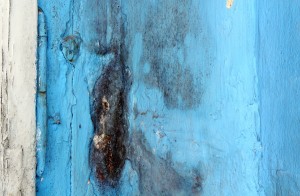Which Molds Are Dangerous?
 In one sense, mold is a bit like water. In small amounts, no mold is actually dangerous, but if you find yourself surrounded by huge amounts, a real health hazard exists. On the other hand, there are particular types of mold that present a higher health risk, because in addition to simply producing spores that people should not be breathing, the spores themselves contain “mycotoxins,” essentially substances that are poisonous to the human body. Keep in mind, ALL molds are unhealthy in large amounts, but these two types of mold in particular can cause illnesses at a faster, more serious rate.
In one sense, mold is a bit like water. In small amounts, no mold is actually dangerous, but if you find yourself surrounded by huge amounts, a real health hazard exists. On the other hand, there are particular types of mold that present a higher health risk, because in addition to simply producing spores that people should not be breathing, the spores themselves contain “mycotoxins,” essentially substances that are poisonous to the human body. Keep in mind, ALL molds are unhealthy in large amounts, but these two types of mold in particular can cause illnesses at a faster, more serious rate.
Aspergillus
This is the more common of the two toxic molds because it is much more resilient, able to adapt to less forgiving conditions. Aspergillus, while toxic, is not extremely so, and only a few strains of this mold actually produce the mycotoxins that present a health threat. On the other hand, it’s a much more prolific “breeder,” able to spread into any area where the environment is damp, such as basements, bathrooms, or even attics during humid summer months. The Aspergillus strains of mold can come in a variety of colors, so the only way to make a positive identification is through a microscope.
Stachybotrys Chartarum
This is the more well known of the two, often referred to as “black mold.” S. chartarum produces a potent mycotoxin, but fortunately not every strain of this mold is actually toxic. The mold is easily identified by its black to greenish-black color, but it’s not an especially hardy mold. S. chartarum requires a lot of moisture on a constant basis, so it really only has a chance to take hold in areas of persistent, heavy water damage, such as flooded areas. Most homes will not need to worry about the dangerous effects of this mold unless they somehow take on serious water damage, and then leave the flood damage unattended for a week or more.
In both cases, there are other strains of mold that can easily be mistaken for one those toxic versions, since mold comes in so many different colors. If you find mold in your home, the best way to identify it is to call in experts, as only microscope verification can provide a final answer to what mold is present and how serious the situation is.
